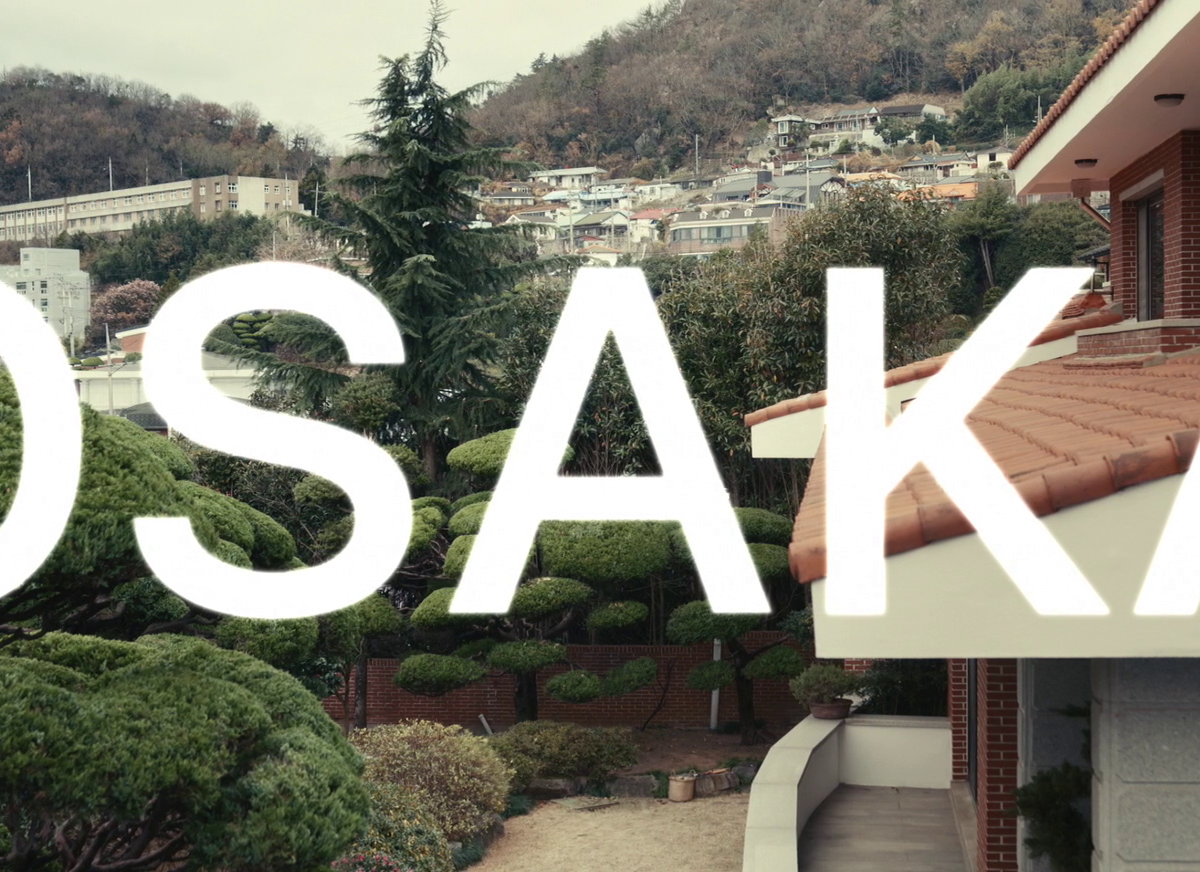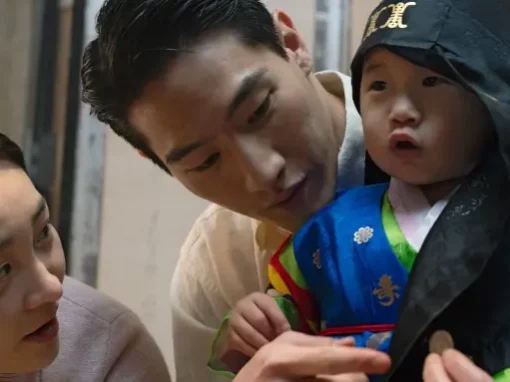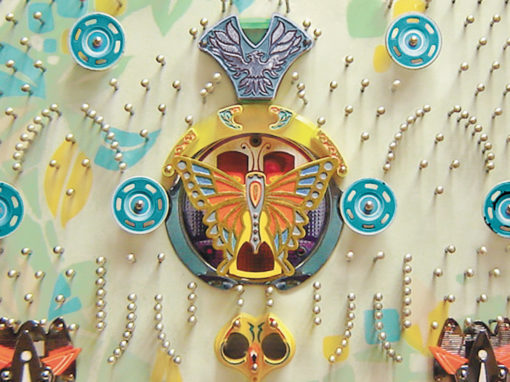Julia Clark on Zainichi Geographies
The relationship between place and identity, and the way that one’s sense of self is transformed through the act of border crossing, has long been a major theme of literature and film by and about Zainichi Koreans (Koreans in Japan). In keeping with this theme, the TV adaptation of Pachinko is explicitly preoccupied with the traversal of space. Each episode’s multiple storylines are divided up by bold white intertitles, declaring the year and location in English, Japanese, and Korean, usually superimposed over sumptuous landscapes. The story’s intersecting progression through time and space – as the colonial-era Sunja and Isak cross from Busan to Osaka, the late 80s-era Sunja and Mozasu travel back from Osaka to Busan – ensures that the majority of the show is structured by frequent intercutting between both two timelines and three very different locations (Busan, Osaka, and Tokyo). The show also seems to revel in its own re-creation of historical urban spaces, lingering on establishing shots of impressive reconstructions of 1931 Osaka Station or the slums of Yokohama in 1923 (none of which were actually filmed in Japan, due to COVID-19 restrictions during production). It seems worthwhile, then, to delve deeper into the significance of one of the main settings for both the show and the book: Ikaino, the area of Osaka that is home to Japan’s largest enclave of ethnically Korean residents, which shows up in latter half of the show and is portrayed at length in the original novel by Min Jin Lee.
In the show, Ikaino is introduced by Isak’s brother simply as “Ikuno ward, our neighborhood” (Ikuno-ku ya, uri tongne), and is primarily portrayed as the abject landscape Sunja abruptly finds herself adrift in after a harrowing journey by boat from colonial Korea to Japan in episode 5. Getting off the trolley in the city’s Korean quarter, Sunja and Isak are immediately confronted by the area’s dark, narrow, and chaotic alleyways, with ramshackle houses and the sight of pigs roaming through the streets. By the end of the episode, the neighborhood is further framed as a space that exists dangerously beyond the law: Sunja and her new sister-in-law Kyunghee quickly find themselves threatened by loan sharks eager to take advantage of the newly-arrived immigrants. This portrayal seems directly drawn from Min Jin Lee’s novel:
“They got off at Ikaino, the ghetto where the Koreans lived. When they reached Yoseb’s home, it looked vastly different from the nice houses she’d passed by on the trolley ride from the station. The animal stench was stronger than the smell of food cooking or even the odors of the outhouses. Sunja wanted to cover her nose and mouth, but kept from doing so… Ikaino was a misbegotten village of sorts, comprised of mismatched, shabby houses. The shacks were uniform in their poorly built manner and flimsy materials. Here and there, a stoop had been washed or a pair of windows polished, but the majority of the facades were in disrepair. Matted newspapers and tar paper covered the windows from inside, and wooden shims were used to seal up the cracks. The metal used on the roof was often rusted through. The houses appeared to have been put up by the residents themselves using cheap or found materials—not much sturdier than huts or tents. Smoke vented from makeshift steel chimneys. It was warm for a spring evening; children, half-dressed in rags, played tag, ignoring the drunken man asleep in the alley. A small boy defecated by a stoop not far from Yoseb’s house.” (Pachinko, Chapter 12)
The choice of Ikaino as a setting here draws on a long history of Zainichi Korean literature written about this space. Straddling present-day Ikuno and Higashinari wards in Osaka, the township of Ikaino was established in 1925 and rapidly became known for its rubber, metalworking, and textile factories and other cottage industries that offered employment regardless of class, ethnicity, gender, age, citizenship status, or linguistic ability, establishing this neighborhood as a “Korea within Japan” or a “second homeland” for Koreans residing permanently in Japan. While Pachinko draws on existing tropes of this area as a lawless and impoverished space, as both the book and TV show progress, Ikaino also emerges as a space with the potential for new and less oppressive forms of identity to be formed. Take for example the show’s portrayal of Isak’s church as a hub of an underground, anti-imperial, and multiethnic labor movement, or the novel’s portrayal of Sunja and Kyunghee’s efforts to take control of their circumstances and achieve self-sufficiency by becoming food vendors at Ikaino’s Tsuruhashi station. These fraught and imperfect attempts at creating spaces of resistance or liberation are themselves drawing on Ikaino’s symbolic importance in Zainichi literature written in Japanese, as a space that continues to challenge pre-conceived notions about national and immigrant identities. Some examples available in English translation include “The Korean Women that I Love ” by Chong Ch’u-wŏl (1974; available in Into the Light: An Anthology of Literature by Koreans in Japan, edited by Melissa L. Wender) and “Lee-kun’s Blues” by Won Soo-il (1987; available in the anthology Zainichi Literature, edited by John Lie), as well as the film Blood and Bones (2004; directed by Sai Yoichi and starring Beat Takeshi, adapted from a 1998 novel by Yang Sŏgil).
Sunja’s experience joining the work force as a kimchi peddler also draws on a long history of Ikaino as a space of female labor, where women who needed to support their families were able to find work long before women workers were regularly accepted in society at large. The fiction and poetry of the above-mentioned Chong Ch’uwol (also known as Sō Shūgetsu) captures how postwar Ikaino society worked to both liberate and oppress first-generation Korean immigrant women, who worked in shoe factories and other local cottage industries as well as bars and snack cafes, and created female-run grassroots forms of financial power through tanomoshikō (頼母子講), lottery-based mutual lending associations created and participated in by women in the community. Sunja’s forays into peddling home-made kimchi and candy at Ikaino’s Tsuruhashi market in the novel are in line with what we know of this space from women’s oral histories. Puzzlingly, the final episode of the TV show seems to relocate her kimchi stand to Osaka Station – putting her first foray into self-employment right at Osaka’s cultural and economic center, as opposed to the more economically and ethnically diverse urban periphery of Ikaino. This choice has obvious dramatic effect, because it allows the show to dwell on the surrounding Japanese hawkers’ overt disgust at the unfamiliar smell and appearance of Sunja’s kimchi, but it also serves to erase the historical existence of a space that already existed in Osaka for women like her at the time, where kimchi would have been considered a familiar staple food. It will be interesting to see how the series continues to engage with – and/or distance itself – from the material and literary history of Ikaino in season two.
Julia Hansell Clark is a PhD Candidate in the Department of Asian Languages & Cultures at UCLA.
Her research focuses on Zainichi Korean authors in Japan in the postwar period, with a particular interest in multilingual writing practices, transnational feminist discourses, and the representation of ethnically marked urban spaces. Her dissertation project examines the intersecting issues of gender, class, and ethnicity in literature written in the Ikaino neighborhood of Osaka between the 1950s and the 1980s. She is currently a Fulbright-Hays Doctoral Research Fellow at Waseda University.


